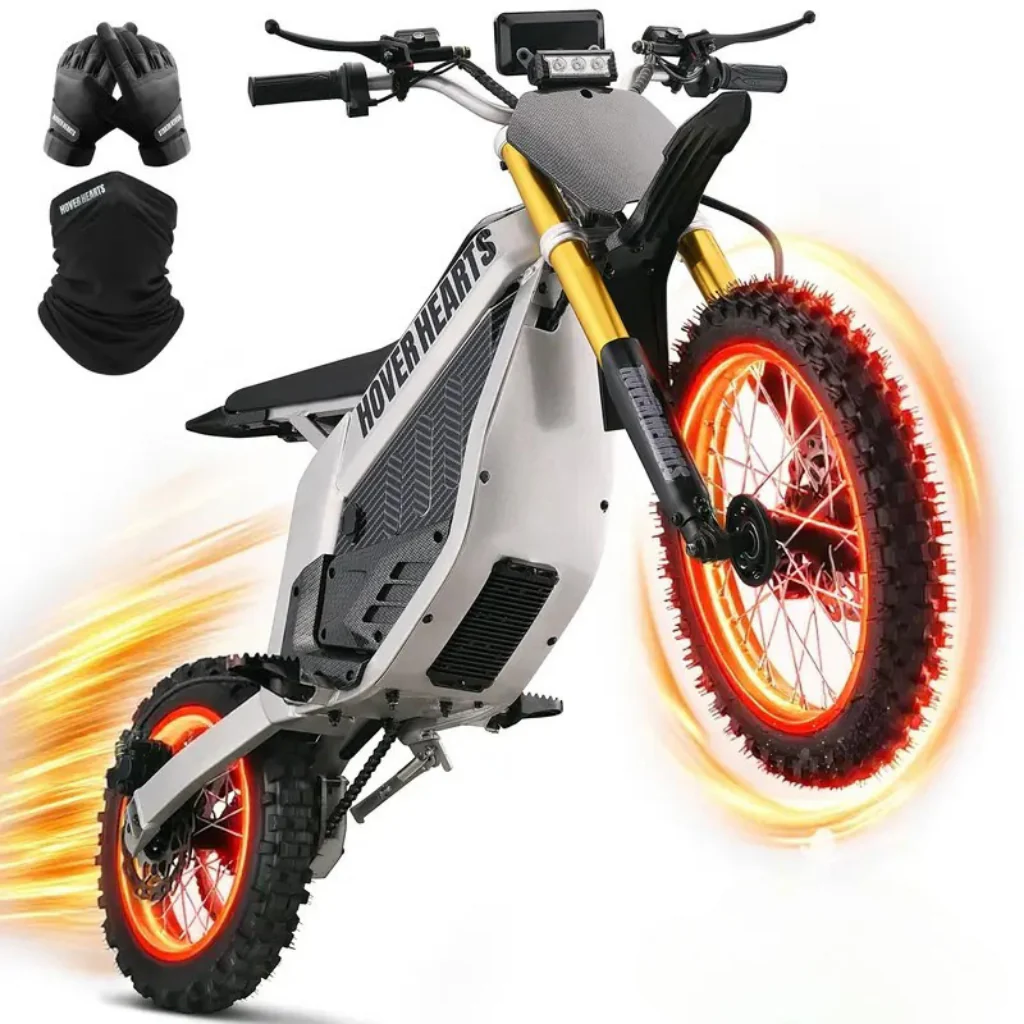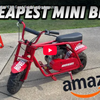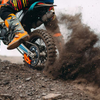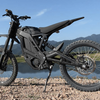How Fast Does a 1000W Electric Dirt Bike Go? Real-World Speed Tests by Terrain & Rider Weight

A 1000W electric dirt bike strikes a perfect balance between power, speed, and affordability. But many riders wonder: how fast does a 1000w electric dirt bike go? The answer depends on motor type, rider weight, terrain, battery, and other environmental factors. Understanding these elements is essential for safe riding, proper expectations, and maximizing performance.
In this guide, we’ll break down real-world speed tests, factors affecting acceleration and top speed, and best practices for riding 1000W electric dirt bikes safely on trails, hills, and streets.
Understanding 1000W Electric Dirt Bike Power
A 1000W motor is powerful for an electric dirt bike:
- Continuous Power: Steady output over time, ensuring consistent speed.
- Peak Power: Short bursts for acceleration, climbing hills, or technical trails.
- Torque: Typically ranges between 80–120 Nm, allowing strong hill-climbing capability and rapid acceleration.
For comparison, a 250W commuter bike produces around 40 Nm torque, showing the 1000W motor’s advantage in off-road performance.
Factors Affecting Top Speed

The top speed of a 1000W electric dirt bike is not fixed and is influenced by multiple factors:
Motor Type
- Direct Drive Motors: Gearless and quiet, deliver smooth acceleration.
- Geared Hub Motors: Use gears in the hub to produce torque, lighter but need more power to accelerate.
- Mid-Drive Motors: Power the drivetrain directly, allowing better hill climbing and efficiency.
Each motor type affects speed differently, with mid-drive often performing best on hilly or technical terrain.
Rider Weight
Heavier riders reduce top speed:
- Additional 50 lbs can reduce speed by 2–4 mph on flat ground.
- Extra cargo, like backpacks or gear, further slows acceleration.
For consistent performance, consider the combined weight of the rider and any load.
Battery Health and Technology
Battery quality directly impacts speed and range:
- Cold temperatures (<32°F) can reduce output by 10–20%.
- Older batteries lose voltage under high current, lowering peak speed by 5–15%.
- Lithium-ion 18650 or 21700 cells are standard; higher-quality cells offer longer life and stable power delivery.
A well-maintained battery ensures the motor delivers its rated 1000W performance consistently.
Terrain and Wind Resistance
Terrain plays a huge role:
- Flat trails allow higher speeds (20–28 mph on average).
- Inclines reduce speed by 1–1.5 mph per 1% grade.
- Rough trails, mud, or sand decrease traction and speed.
- Strong headwinds can reduce top speed by several mph.
Tire Pressure
Optimal tire pressure minimizes rolling resistance:
- Low pressure absorbs bumps but increases resistance.
- High pressure reduces rolling resistance but may reduce grip on uneven terrain.
Real-World Speed Tests by Terrain

Flat Terrain
On flat trails or roads, a 1000W electric dirt bike typically cruises:
- 20–28 mph for average riders (150–180 lbs).
- Under ideal conditions, some bikes can reach 35–40 mph.
Acceleration is strong, especially with peak power bursts.
Hilly Terrain
Inclines and steep trails reduce top speed:
- 1% incline reduces 1–1.5 mph.
- Technical trails and sharp turns further lower average speed to 18–25 mph.
- Mid-drive motors perform best for climbing hills.
Off-Road Adventures
For rugged trails, sand, or loose gravel:
- Top speed is limited by traction and control needs.
- Average speeds: 15–22 mph, depending on terrain difficulty.
- Hill climbing remains strong due to high torque (80–120 Nm).
Urban Roads
If street-legal, 1000W bikes perform well in urban areas:
- Speeds up to 25–28 mph on flat streets.
- Ideal for short commutes or errands with light traffic.
Impact of Rider Weight on Speed
- Lighter riders (under 150 lbs) may reach max speeds closer to 35 mph on flat terrain.
- Heavier riders (over 200 lbs) may average 20–25 mph.
- Extra gear like backpacks reduces speed slightly and lowers range.
Acceleration and Torque
A 1000W motor delivers:
- Strong 0–20 mph acceleration in 3–5 seconds.
- Smooth hill climbing even with moderate cargo.
- Immediate torque makes off-road riding more thrilling.
Battery and Range Considerations
Battery size and quality influence performance:
- Typical 48V 1000W dirt bikes offer 15–25 miles per charge under normal conditions.
- Full battery power ensures maximum speed; low batteries reduce top speed.
- Swappable or removable batteries extend ride times for longer trails.
Safety Tips When Riding a 1000W Electric Dirt Bike
High-speed bikes require responsible riding:
- Always wear a helmet, gloves, and protective gear.
- Maintain a safe speed according to terrain and skill level.
- Inspect tires, brakes, and battery before rides.
- Avoid crowded areas or streets if the bike isn’t street-legal.
- Plan rides for battery range and trail conditions.
Conclusion
So, how fast does a 1000w electric dirt bike go? On flat terrain, expect 20–28 mph for average riders, with peak speeds reaching 35–40 mph under ideal conditions. Hills, rider weight, terrain, battery health, and wind all influence real-world performance. These bikes are powerful enough for off-road adventures, urban commuting, and moderate cargo hauling.
Understanding these factors allows riders to set realistic expectations, maximize safety, and fully enjoy the thrilling ride a 1000W electric dirt bike provides. With proper maintenance, safety gear, and terrain awareness, these bikes offer unmatched fun and versatility.
Frequently Asked Questions
How fast does a 1000W electric dirt bike go on flat ground?
Typically 20–28 mph for an average rider, with ideal conditions reaching up to 35–40 mph.
Does rider weight affect top speed?
Yes, heavier riders can reduce top speed by 2–4 mph and slightly lower acceleration.
How does terrain impact speed?
Inclines, technical trails, sand, and gravel reduce average speed, sometimes to 15–22 mph.
Can a 1000W bike handle hills easily?
Yes, with high torque (80–120 Nm), these bikes climb moderate to steep hills smoothly.
What maintenance affects speed?
Battery health, tire pressure, and proper motor maintenance are key to sustaining maximum speed.




